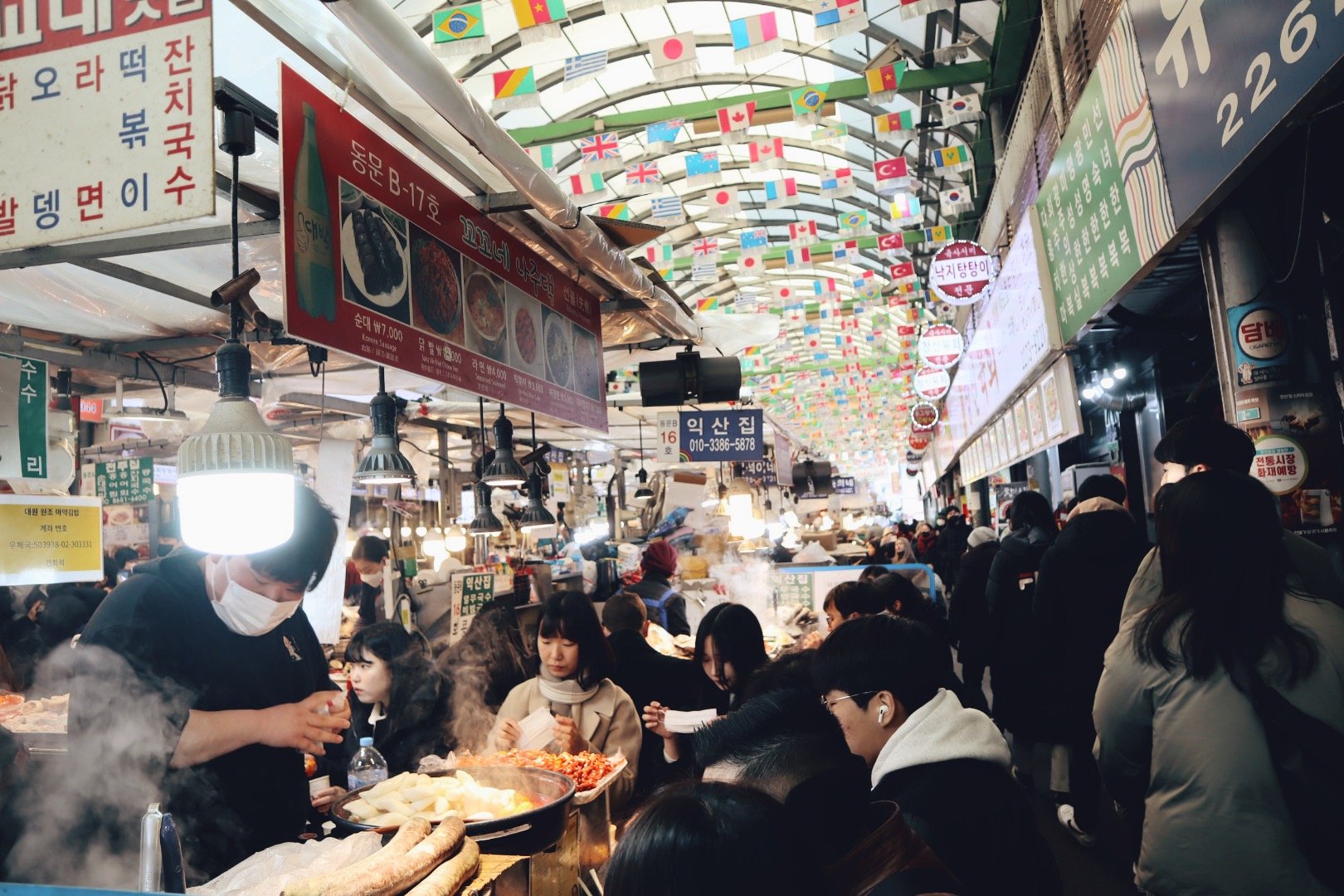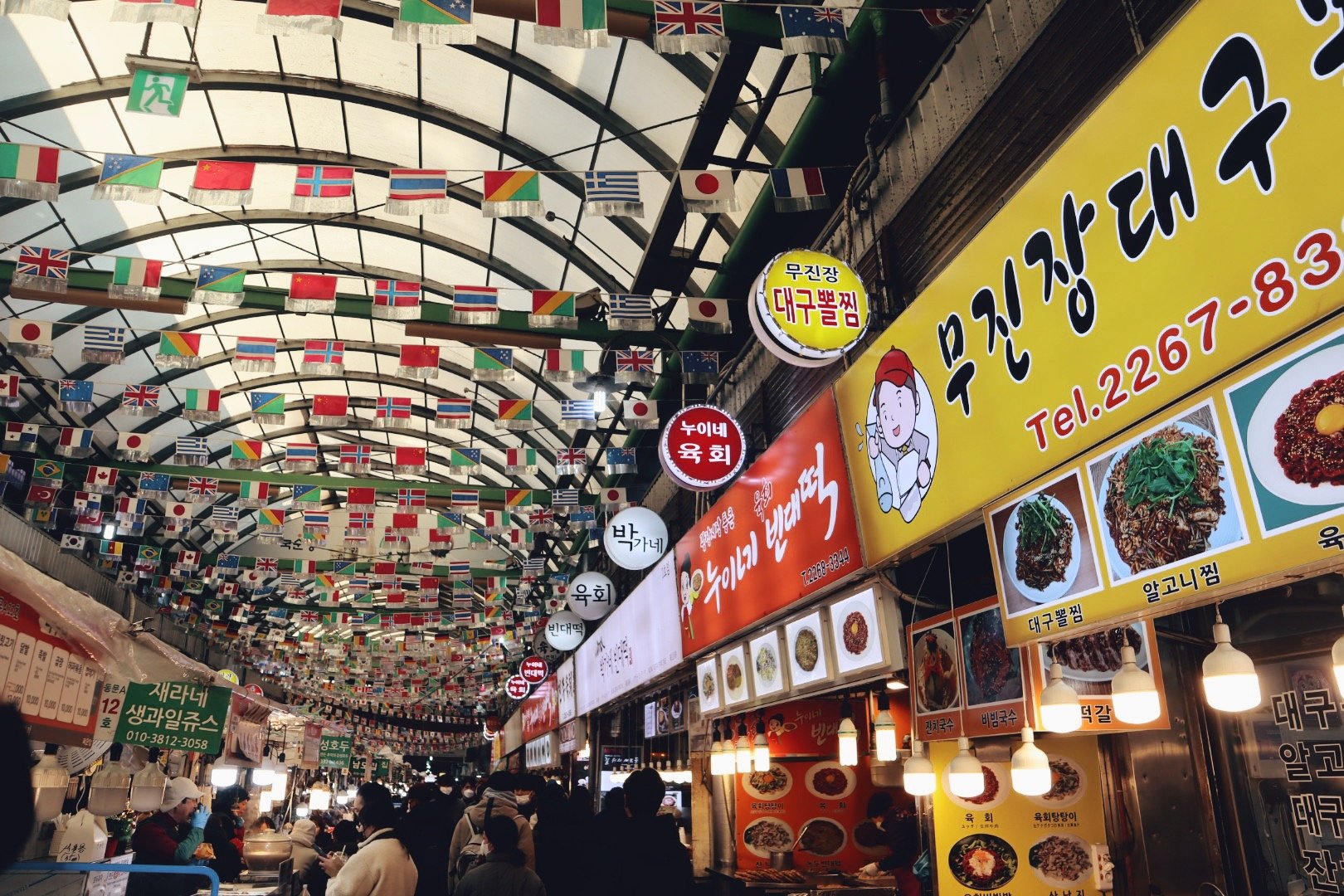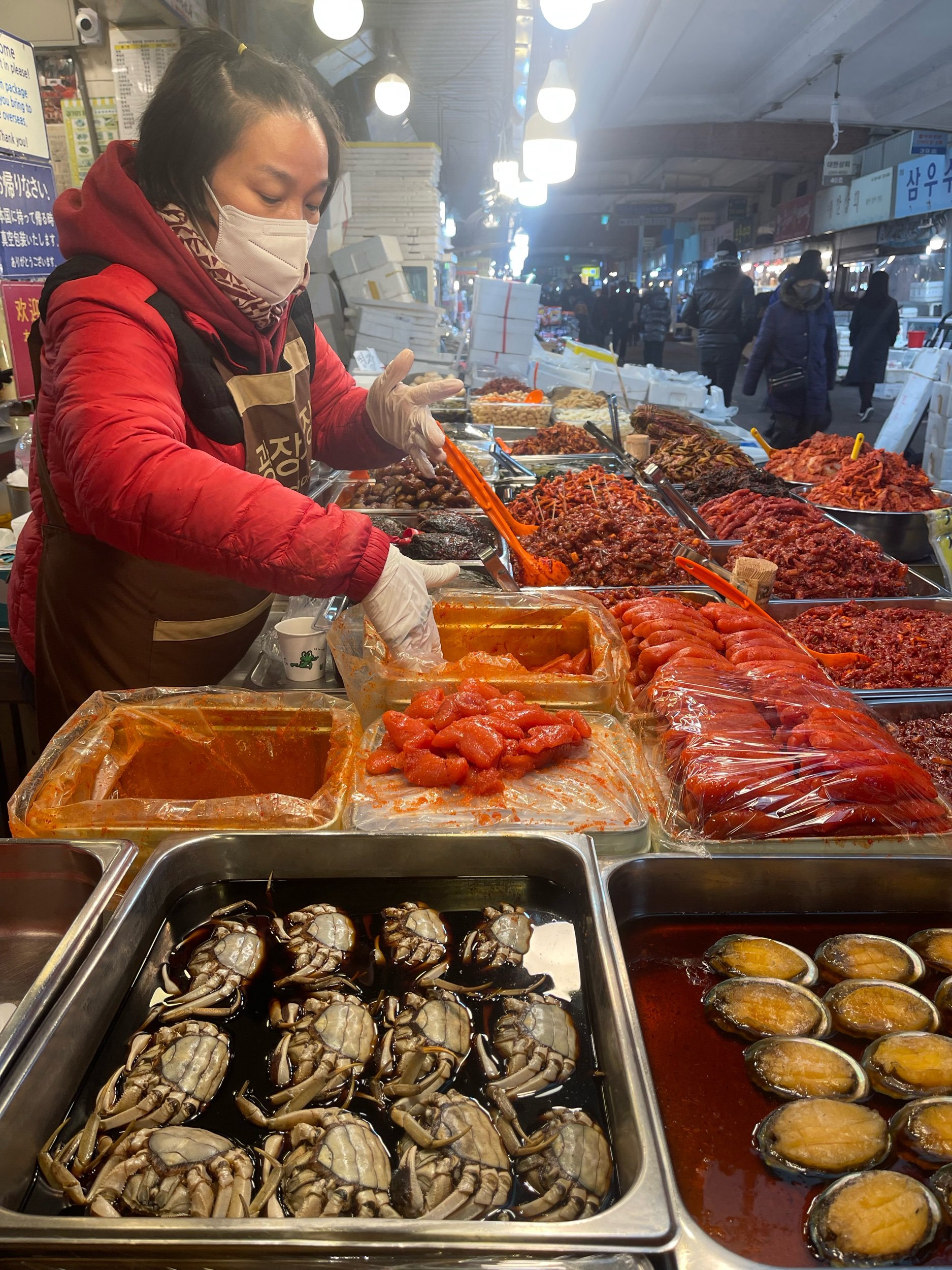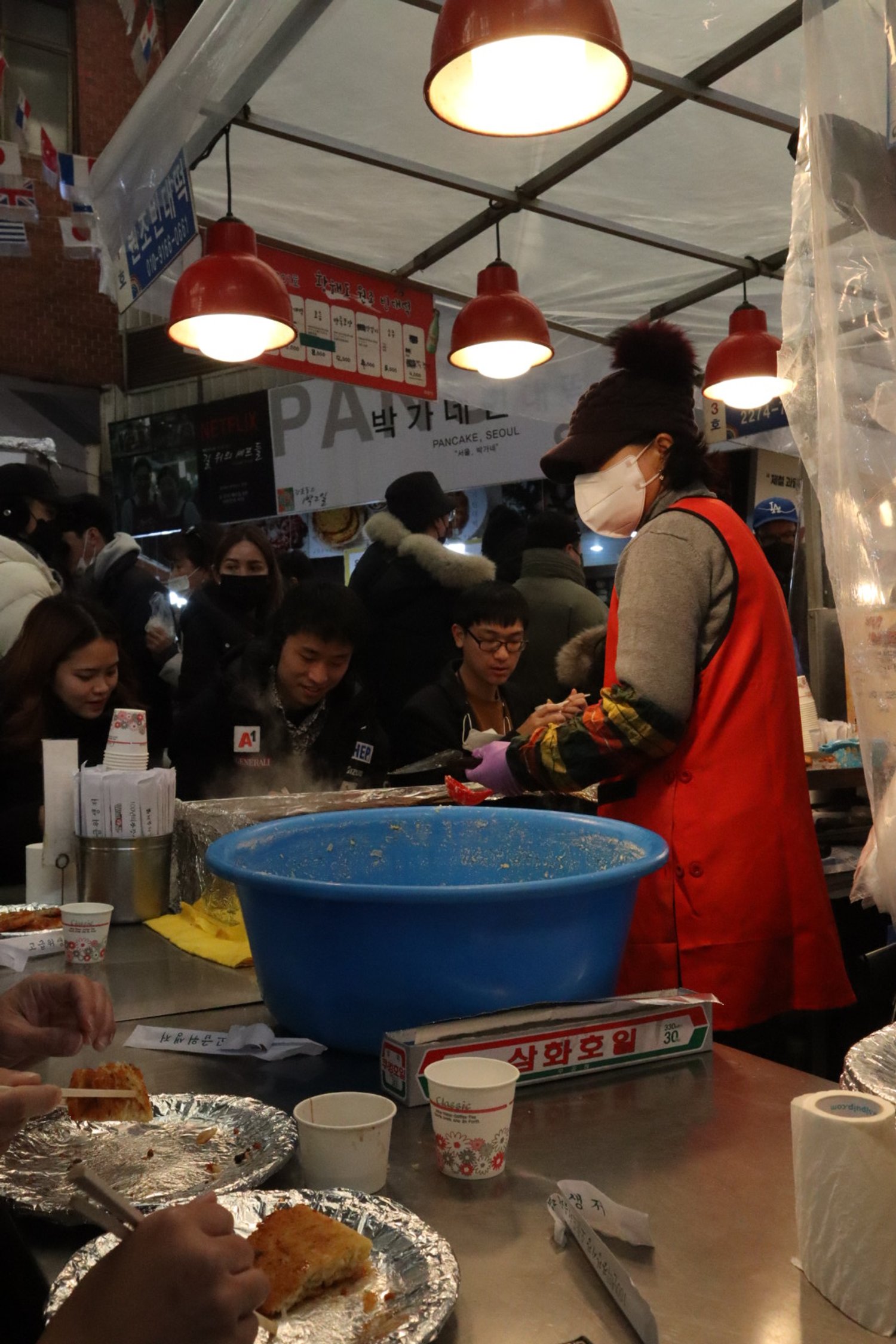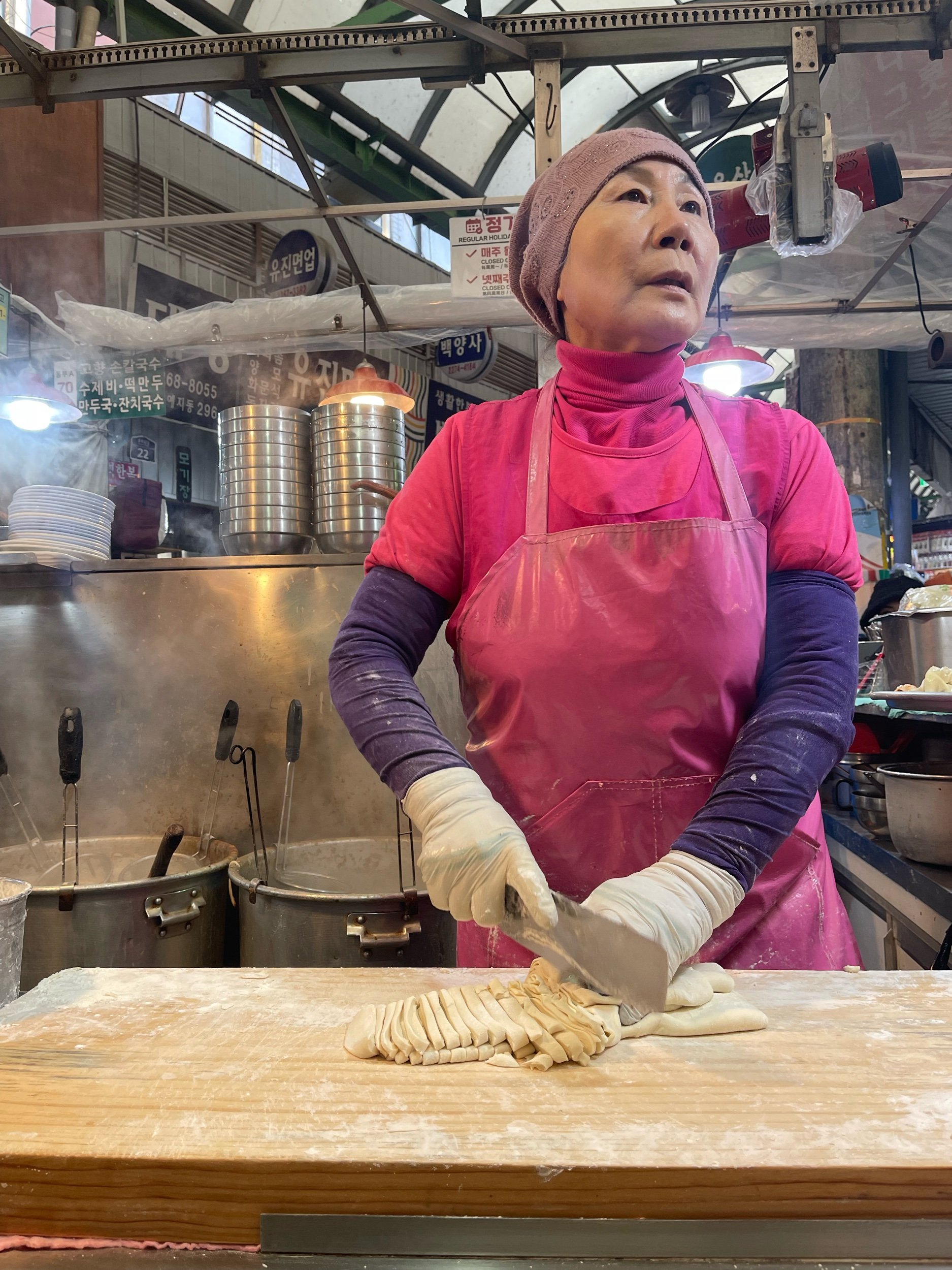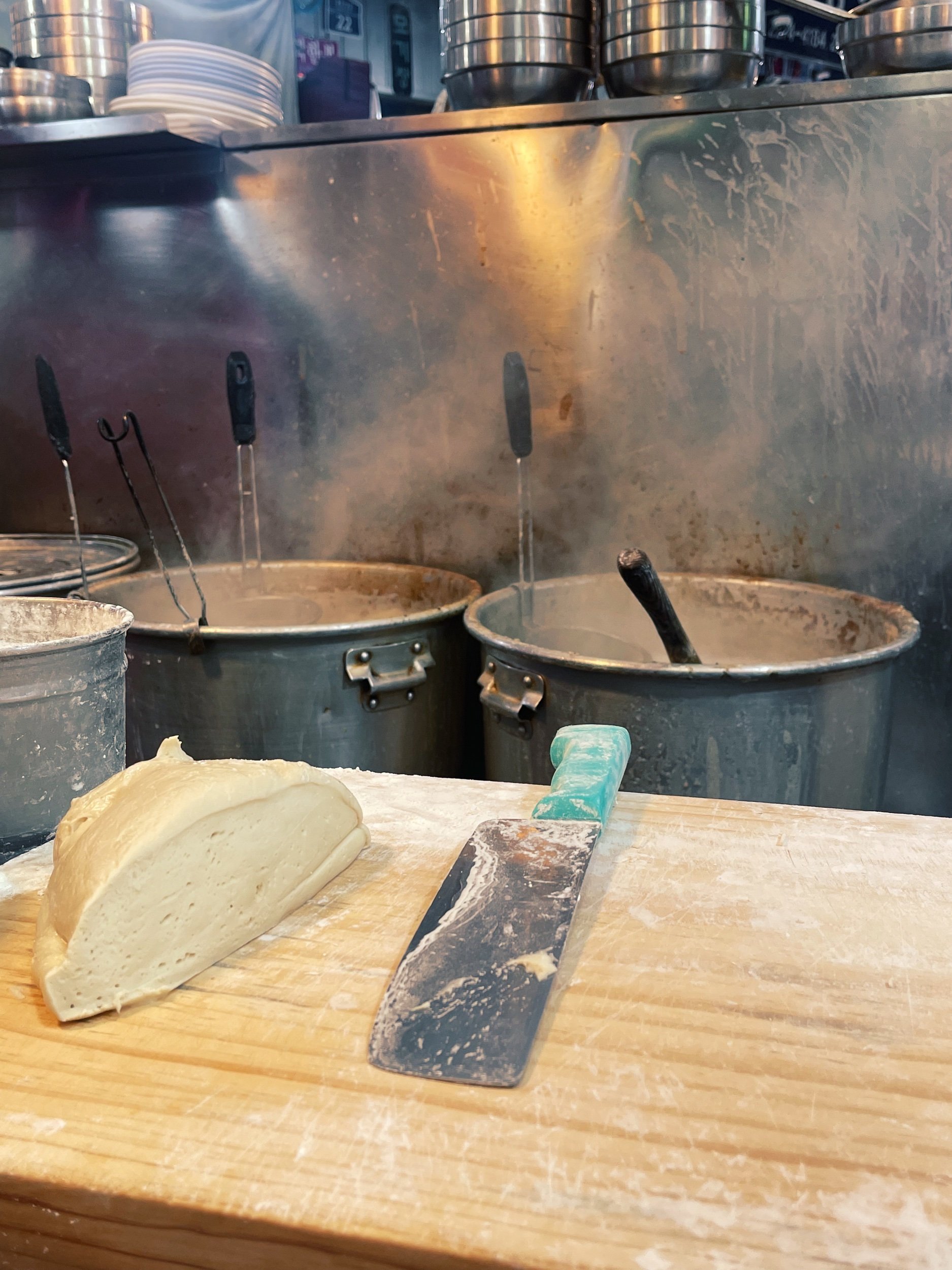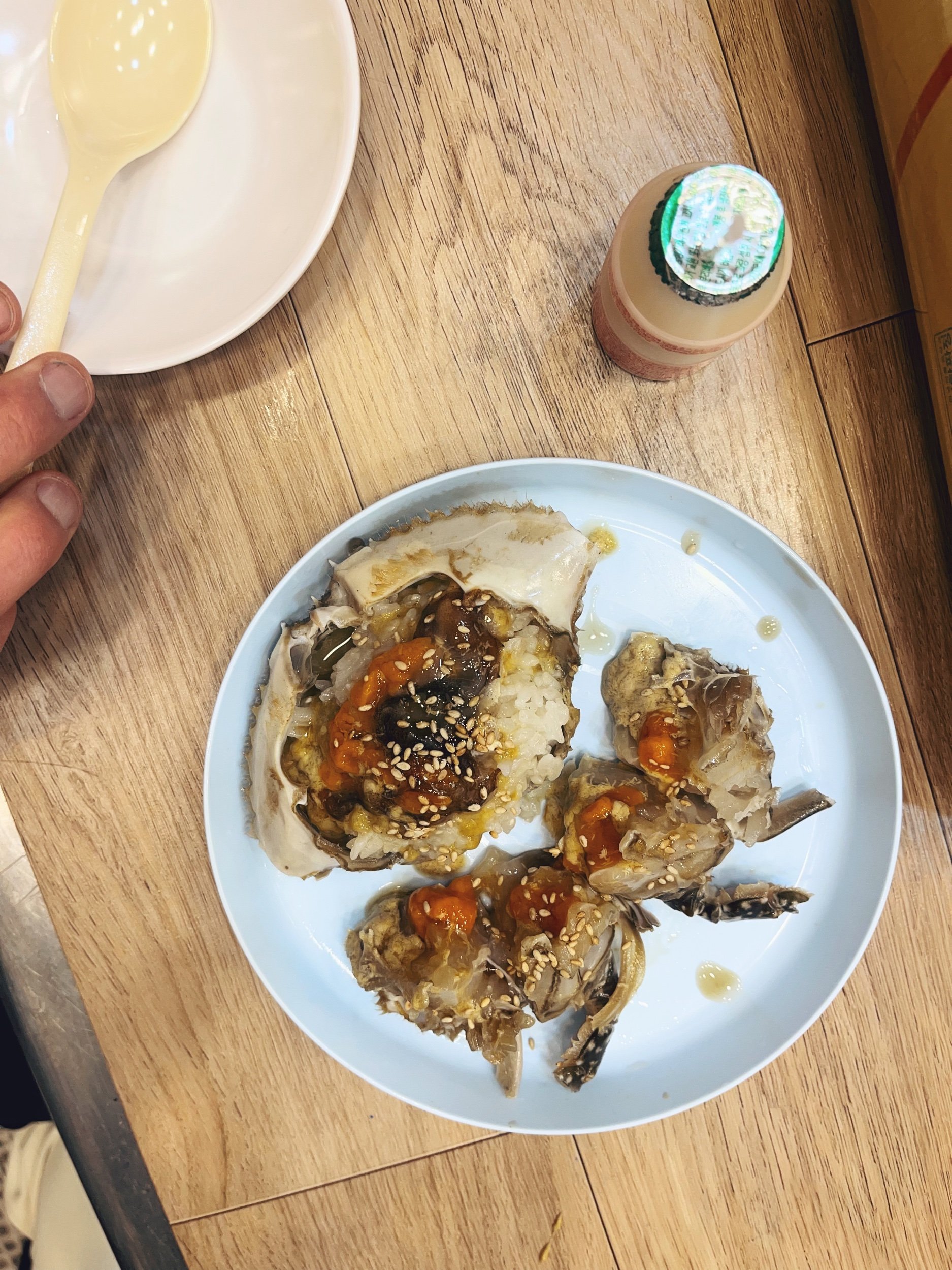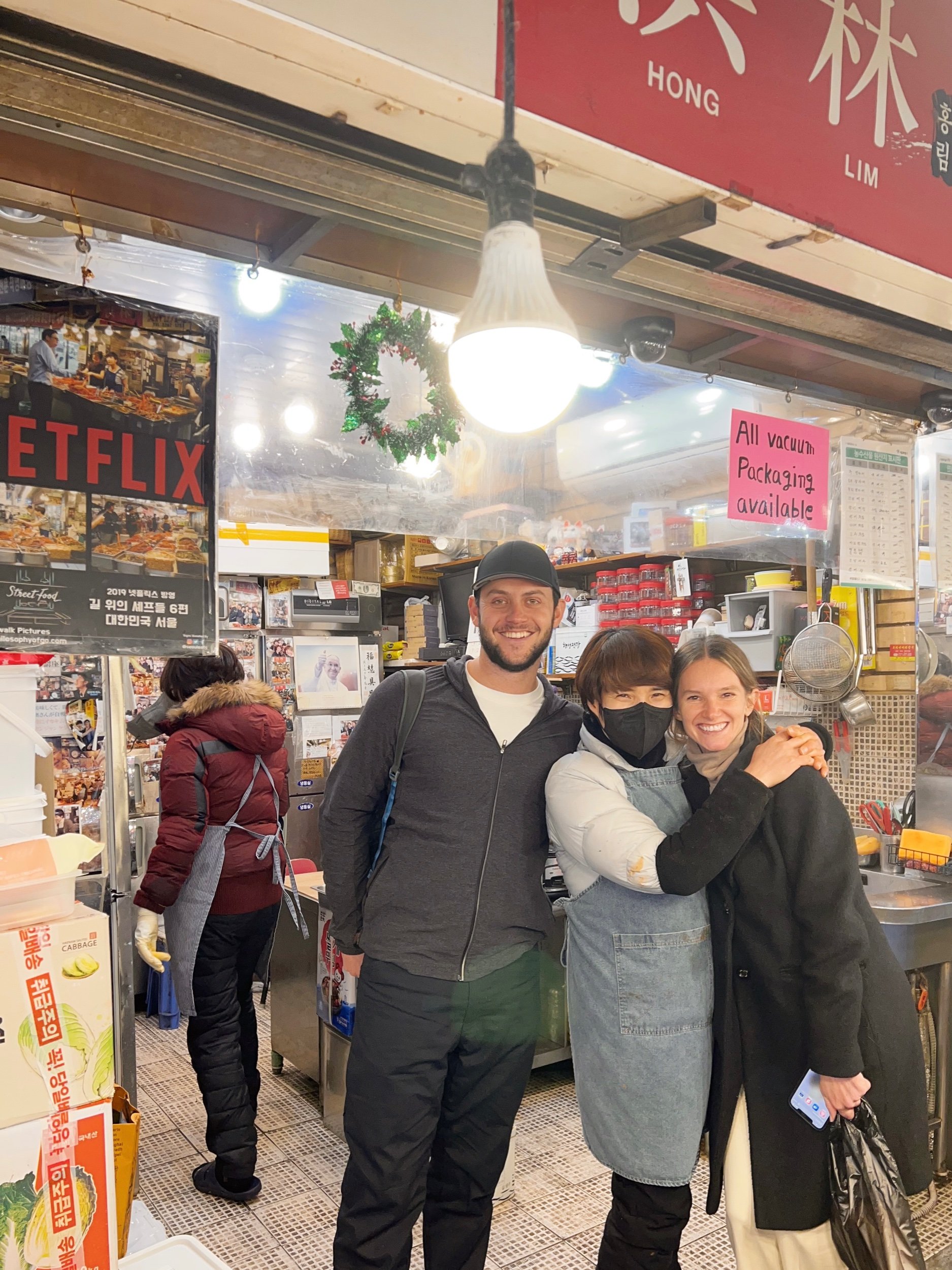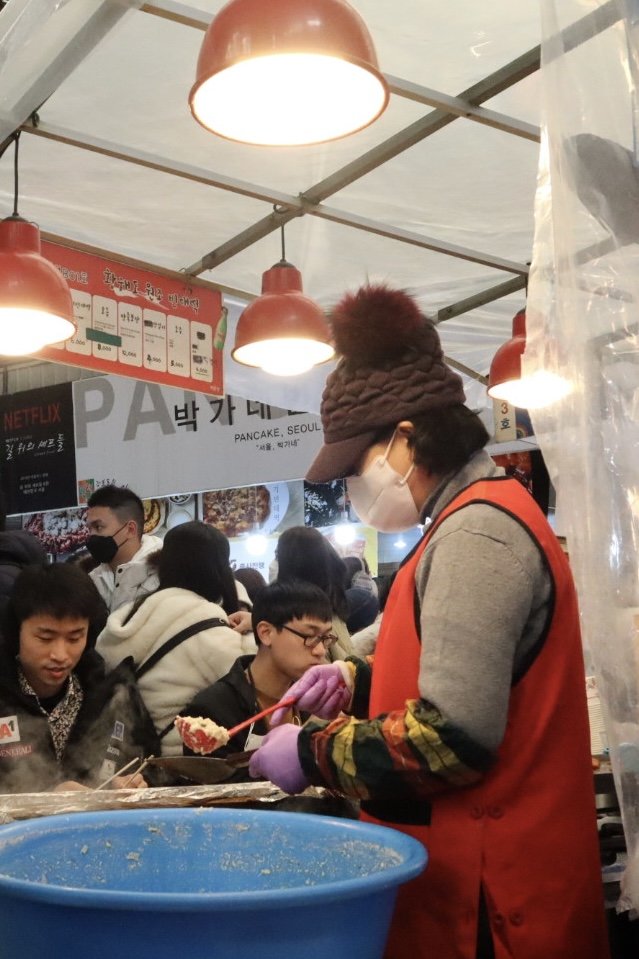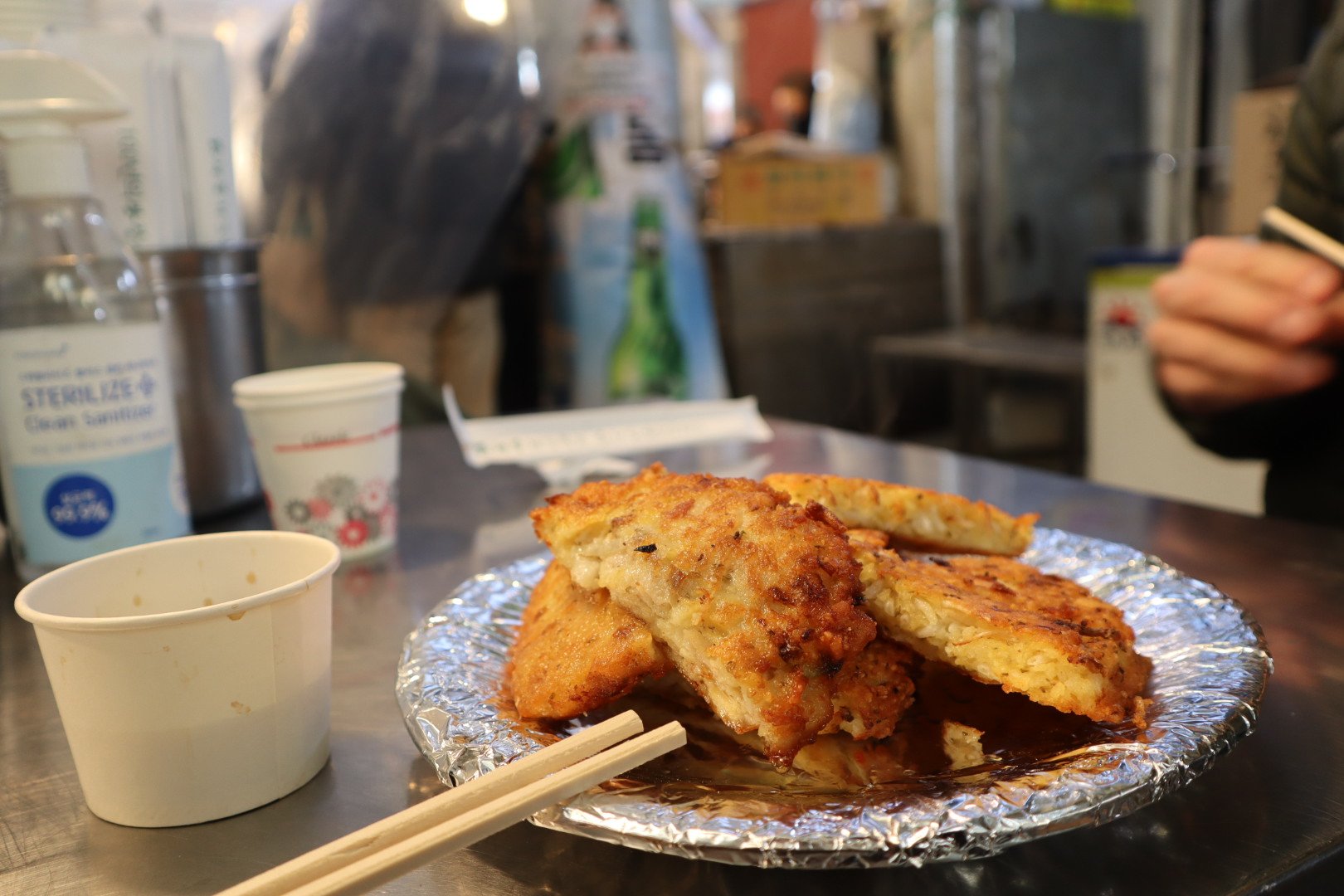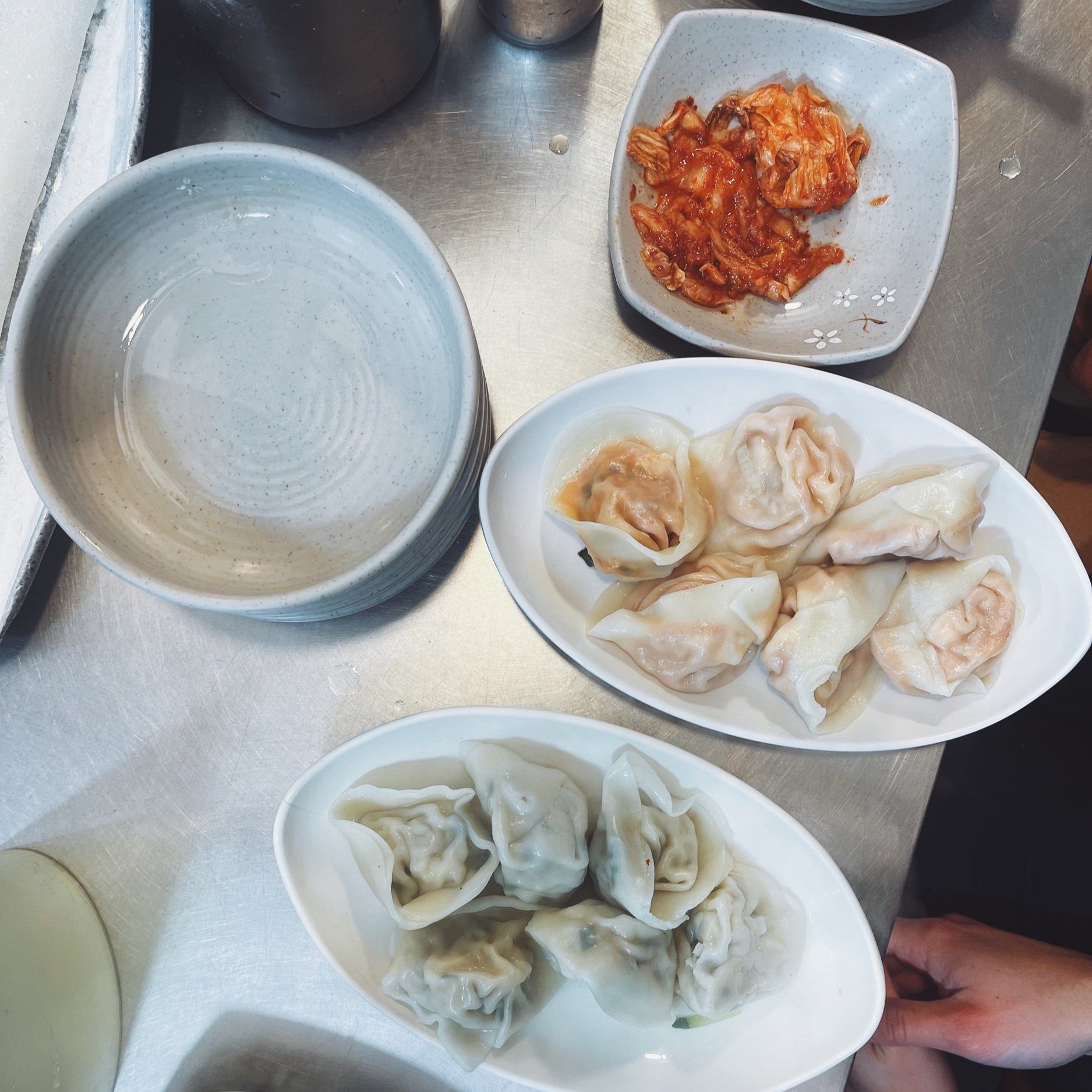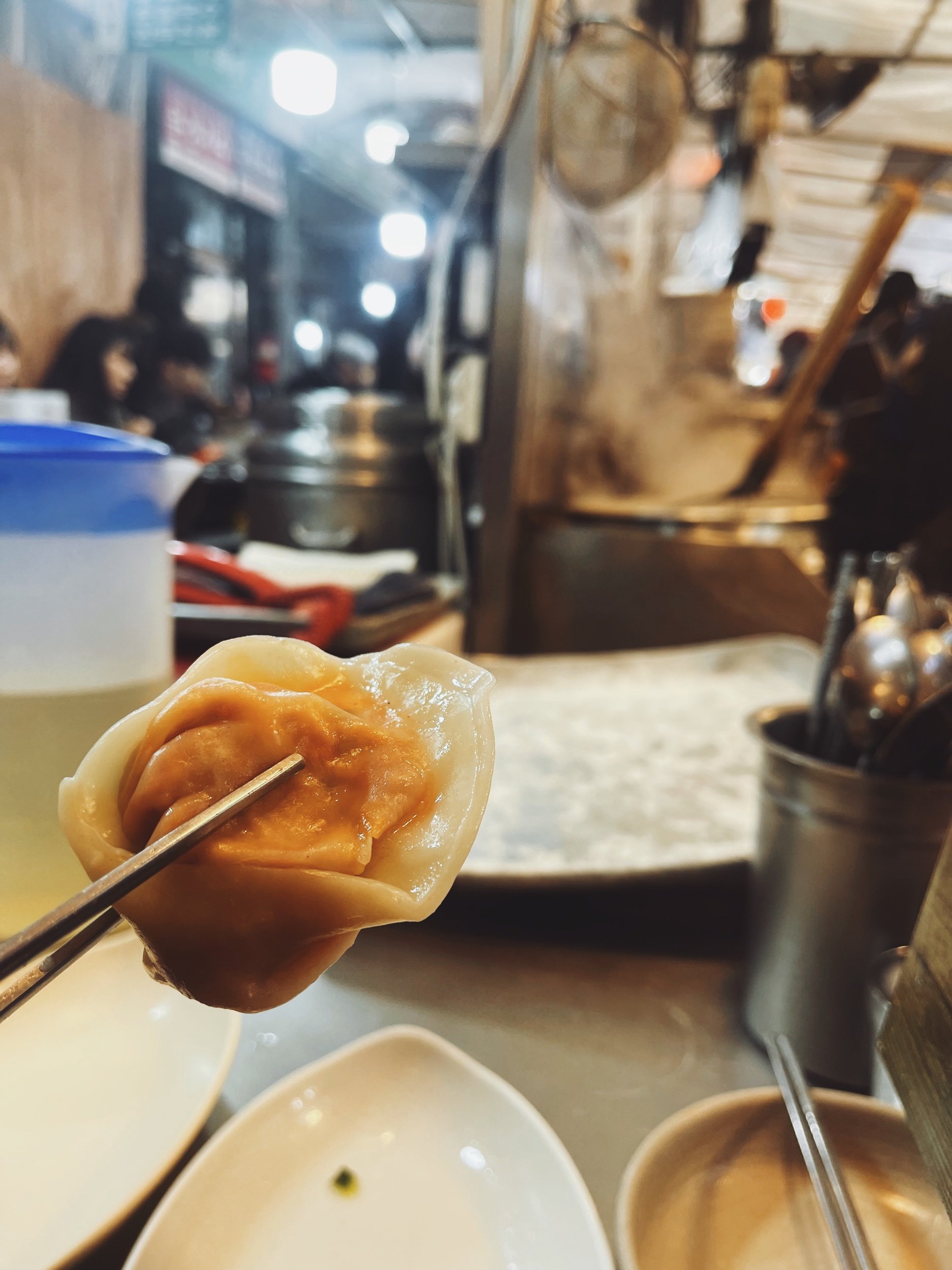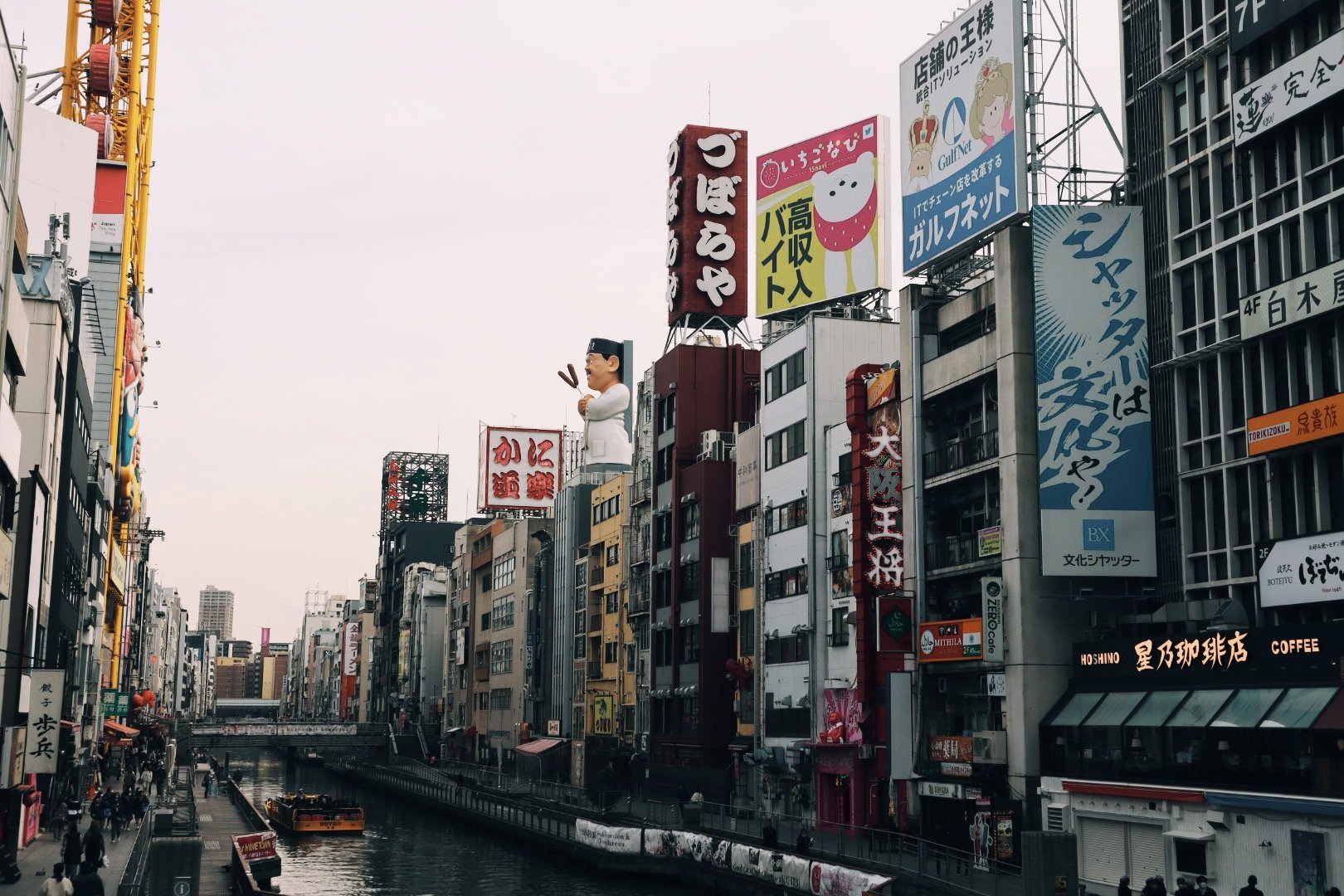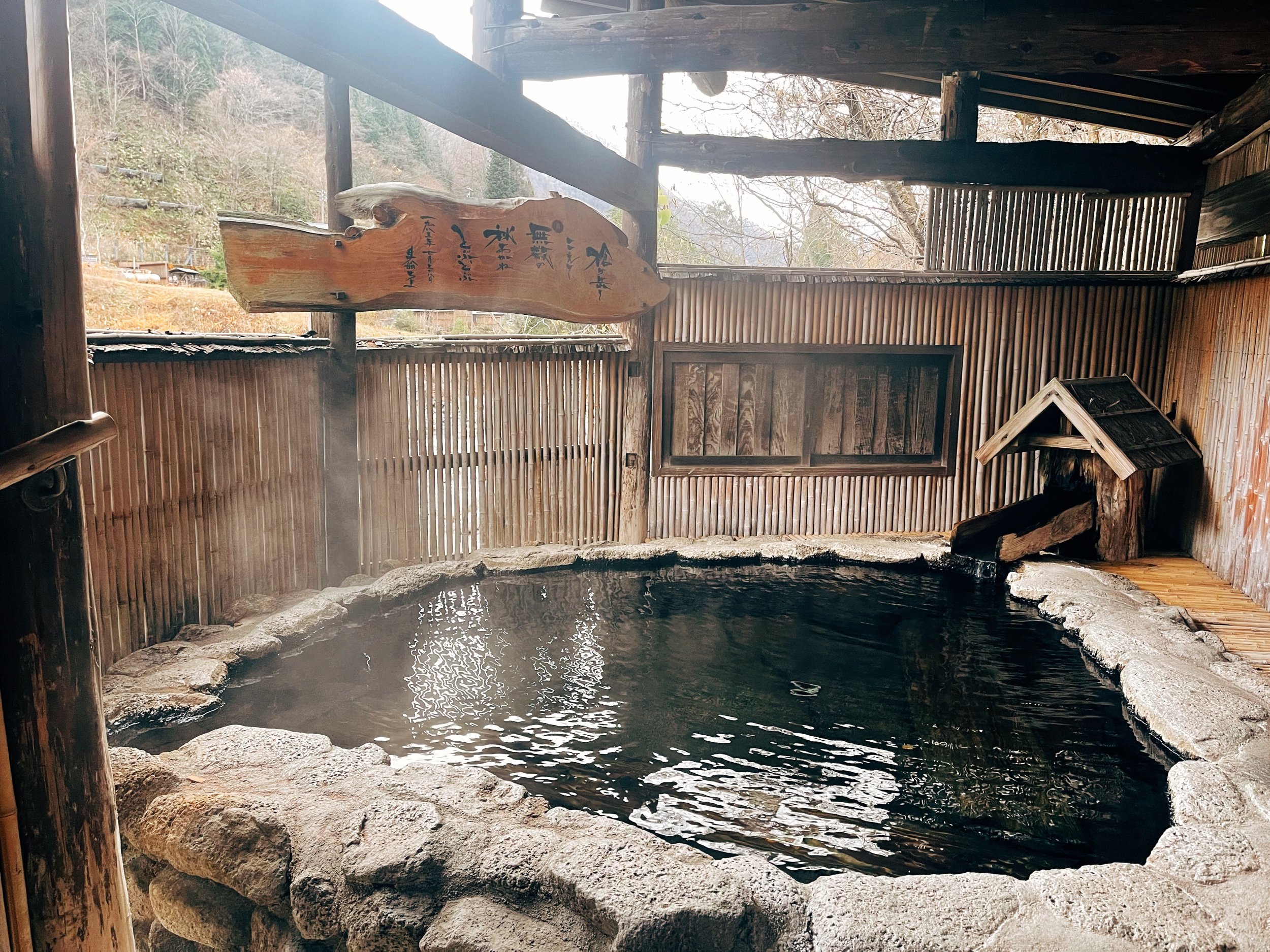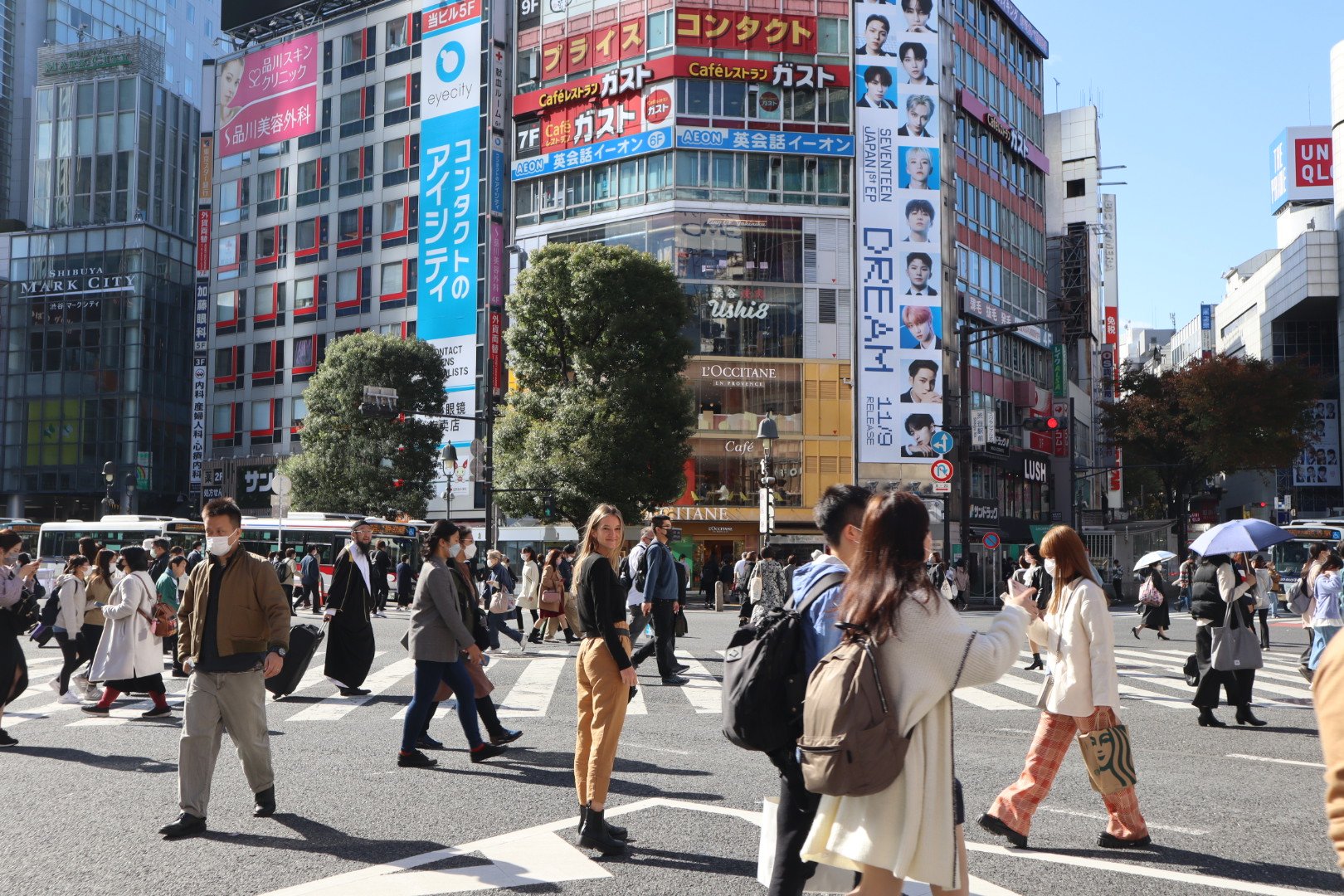Gwangjang Girl Gang
Serving up the soul of Seoul.
Something about the dark opening wedged between nondescript brick walls drew me in. Maybe it was the fumes of boiled dumplings or the funky fermentation odor of kimchi that rippled into the cold breeze. Dozens of bodies migrating inside sparked curiosity. Either way, we were unconsciously picking up our pace, eagerly progressing towards the opening of the Gwangjang Market.
Contrary to the dark opening casted by a shadow from the overhang, stepping into the Gwangjang Market was bright and vibrant. Expansive, crisscrossing halls were lit up by the translucent ceilings. Small country flags from around the world acted as colorful decorations. Stalls swallowed either side of the hallways, creating small walking paths crammed with hungry patrons and rushed shoppers. If you wanted to grab a bite, you joined the crowds swarming at the front of stalls and sat down on long benches. While not always the most comfortable seat, most benches were heated - providing instant relief from the sharp chill of a December day in Seoul.
There were no English signs and no English voices, just the loud sounds of pans hissing and bowls colliding with metal chopsticks. Sounds of slurping, chewing, and smacking echoed throughout. But above all the noise of food being made and enjoyed by thousands of guests, it was the Korean women manning the stalls that stuck out the most.
Assertive demands and confident gestures prevailed at every stall, giving us a glimpse of the grit behind the women commanding Gwangjang Market. Work for these women started as early as 4 AM and continued until the the last light flickered in the evening, sometimes as late as 11 PM. Stern faces showcased supreme focus on the task at hand, making dishes based on recipes that were not written down in a recipe book or fluffed up for Instagram. These women were dishing out classic Korean favorites that have been served in society for generation. Given the Seoul’s progression towards modernization and global culinary influences, some of these traditional dishes can only be found at this market. With that responsibility, women here feel an intense obligation to preserve these culinary customs. Most take minimal days off as they it is their duty to serve these foods and provide income for their families.
Watching these women work tirelessly really captivated me. It was my first taste of the role women play in many Asian countries. I learned throughout our travels that women take on a laborious, demanding role in the traditional family. They get married young, have kids, sustain the home, and cook. Meals can be tedious with many components to carefully attend. Whether it’s fermenting cabbage to create enriching kimchi flavors or rolling rice cakes into tteokbokki then letting them simmer in a spicy chili paste, there is always something to do in the kitchen. While the women of the house might not be dressed in business suits, it was clear that these were some of the hardest working people I’d come across. And above all, they had an intense passion for the food which was tasted in every delicious bite we sunk our teeth into.
Admiring the craft
Mrs. Cho Yonsoon encapsulated what it meant to be a woman working in the Gwangjang Market. We were first introduced to Cho in the Netflix series Street Food Asia, which partially influenced our Korean travels. Her story of opening the Gohyang Kalguksu stall, finding her place in a highly competitive market, and cooking her way out of family debt was nothing short of inspirational. She’s infamous for Korean kalguksu which are hand cut wheat flour noodles served in a homey broth.
We blazed through the market, in search of her stall, and found our place at the end of a long line. Patience paid off. As we were finally seated in between the shoulders of guests, we found ourselves directly in front of Cho’s cutting board - aka thefront row seats to the main event. We watched her pull out a fat ball of dough, plopping hard onto the cutting board. Cho’s rolling pin pressed firmly into the dough, creating an elongated flat slab. She worked with quick, swift movements. The knife sunk into the dough in rhythmic motions and soon it was transformed into asymmetric noodle strips - all while her eyes fixated on the simmering pots of broth and other components of the dish that were also in the works. It wasn’t long until we received our bowls of kalguksu, and it might have been the best noodle I’ve ever had. Some noodles were long and flat, requiring intermediate chopsticks skills; side note, metal chopsticks in Korea are next level. Others were small orecchiette-like bits that could easily be scooped by a spoon (my personal favorite). Regardless of length, the texture was slick to the tongue but there was a thickness that made each bite chewy allowing me to taste the nutty flavor from the wheat. It was different from any other noodle dish I’ve tasted where the other ingredients - the sauce, the broth, the toppings , etc. - drove the flavor. Here, it was all about the noodle. The broth was mild, with a slightly savory taste, which let the noodle shine. I chased the dish down with Cho’s tangy kimchi and left her stall as an extremely satisfied customer; so much so that we came twice more during our time in Seoul.
Cherishing the hospitality
Ms. Gunsook Jung captured our hearts with her warm, inviting energy and her soy marinated crab at the Honglim Banchan stall. We learned that Gunsook’s banchan stall was first opened during the Korean War by her grandmother. Banchan is a collection of Korean side dishes that diners enjoy before the main meal - think fermented cabbage, pickled radishes, and other marinated goodies that trigger all five senses. They colorful, they’re sticky, they’re flavorful, and they exude all sorts of intoxicating aromas. We approached Gunsook’s stall during off-hours and and were greeted to 20+ metal vats of banchan that surrounded the stall. Each twinkled with different color of thick sauce - none of which we could identify with our American eyes. Rather than ordering a bag to-go which was custom at other banchan stalls, we were immediately guided to the back of the stall where two small metal stools sat around a cooking counter. Gunsook brought us right into the action. She cleared the counter, grabbed a whole crab dripping in a glaze that had been marinating for days, and placed it on the cutting board in front of us.
Like a surgeon, a member of her team dissected the crab using scissors and sprinkled a dash of sesame seeds atop. The crab was presented in full. The crab’s body had been opened up and positioned like a plate, cradling the fleshy crab meat. The legs were cracked open so the meat could be easily accessed by a spoon. Unlike the stringy textures of cooked crab, this version had a jelly texture that was packed with flavor. At first, I was hit with a savory sensation that soon disintegrated into a sweet taste as the crab meat melted into my tastebuds. It was one of the most memorable bites I’ve ever tried during our travels My buds are triggering with flavor as I type.
And tasting all the tradition
Getting the back story of all the women working day in and day out was next to impossible - there’s over 5,000 shops. However, there are limitless foods to eat at the Gwangjang Market. We tried to eat at as many places as our stomachs would allow, seeking out the stories of Korean women that were told through their dishes.
Bindetteok, or mung bean pancakes, is one of the more popular foods in the Gwangjang Market. Multiple stalls serving the pancake congregate in one area, creating a sizzling aroma of starchy batter and salt. We saw women towards the back of the stalls, grinding mung beans into a paste and blending it with various chopped vegetables and seasonings. The batter resembled a chunky a cake mix and sat in a massive vat, waiting to be poured onto the griddle. In that same stall, griddles expanded in long rows so guests could get a glimpse of the frying action. The bindetteok batter crackled as the surface turned a golden brown then they were scooped up and served with soy sauce, vinegar, and pickled onion. We received two pancakes, cut into quarters and served on an aluminum wrapped plate. The texture was crunchy like a proper latke, oozing with earthy herbal flavors and salty tastes. However it was slightly thicker and had a warm, soft center. Dipping the pancake into the sauce added a tangy flavor that balanced out each bite.
We came across a few stalls where women were flattening rice into a seaweed wrapper and were immediately intrigued. This looked strikingly similar to sushi rolls but the flavors couldn’t have been more different. Mayak kimbap are spicy rice rolls which combined seaweed paper, rice, carrots, cucumbers, and perilla leaves into the perfect size snack. We learned that ‘mayak’ translates to narcotics and they were given this name because of their highly addictive qualities. Many people have different beliefs on what makes these snacks so delicously irresistible. The standout ingredient that caused my compulsive eating was the vinegar. Vinegar based rice hit me with with flavor and the sesame oil on the top of the roll added an umami depth. In case that wasn’t enough, mayak kimbap is served with a wasabi mustard which completely seduced my spicy side. We watched women feverishly roll up these small snacks to keep up with demand during a busy lunch rush. Each worked with keen focus, as if they were in a quiet room all alone.
Saving the best for last … the inevitable kimchi mandu or the Korean kimchi dumpling. You couldn’t pass a stall at the Gwangjang Marker without seeing a woman intricately rolling up these little chunky orbs and setting them out for display like prized possessions. They’re an essential part to all Korean diets as they’re enjoyed in a variety of culinary settings - whether you’re standing on the side of a busy street or lounging in a chair at a fine dining restaurant. Unlike dumplings that are stuffed with minced meat, glass noodles, or a variety of other ingredients, the only thing stuffed in kimchi mandu is kimchi. But not to worry, each bite still offers and array of textures and flavors that satisfies the tongue.
We squeezed our way onto a bench so we could absorb the entire process of creating a kimchi dumpling. The dough relies on the simple ingredients of a flour base, water, and salt. These are combined, rested, and rolled out into small circular pieces, like miniature pie crusts. Chopped kimchi is then ladled on top. The women at the market moved with speed. Their fingers instinctively knowing the precise movements needed to secure the kimchi inside the dough. Dumplings then disappear into a large vat where they are boiled for a few minutes and re-emerge, ready for consumption
A family of dumplings was served on a small plate, sliding from side to side as the woman from the stall passed them over to us. The dough was translucent, exposing a faint pink color of the fermented cabbage. Picking one up was no even feat - the slippery texture didn’t alway agree with the metal chopsticks. After a few failed efforts, I eventually secured a dumpling and quickly popped it into my mouth. One bite of kimchi mandu instilled pure carby joy. The kimchi was spicy and still slightly crunchy, offering unique textures with every chew. While the dough was seemingly simple, it was tender and added a savory counter balance.
Eating kimchi dumplings felt like the pinnacle of the Gwangjang Market. Each bite offered a glimpse into the lives of the women standing in front of us and their relentless efforts to present dishes they learned from their mothers. We tasted tradition in this market and pride in ever each bite and as we left the market on 5th and final time, we felt a tremendous respect for the Korean women and an adoration for their cuisine.


